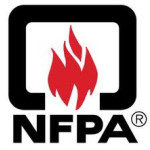- Industry: Fire safety
- Number of terms: 98780
- Number of blossaries: 0
- Company Profile:
Established in 1896, NFPA's mission is to reduce the worldwide burden of fire and other hazards on the quality of life by providing and advocating consensus codes and standards, research, training, and education.
An in-depth operational analysis of a system or component to verify that it is operating correctly.
Industry:Fire safety
An independent, third-party organization established for product testing and evaluation that administers a labeling/listing/follow-up program.
Industry:Fire safety
An independent third-party organization that determines product compliance with the requirements of this standard with a labeling/listing/follow-up program.
Industry:Fire safety
An independent third party utilized by an organization to perform any one or any combination of advanced inspection, advanced cleaning, or repair services.
Industry:Fire safety
An independent secondary underwater breathing system (i.e., a pony bottle with first and second stage or a pony bottle supplying a bailout block).
Industry:Fire safety
An independent facility or area within a records center, designed for the protection of archival materials and records, typically designed to be fire resistive.
Industry:Fire safety
An incinerator served by a single chimney flue that serves also as the charging chute, where refuse is fed directly to the incinerator through this chimney flue from one or more floors above the incinerator. This class of incinerator is suitable for Type 1 and Type 2 waste materials and garbage incidental to residential occupancy in single family and multifamily buildings. This class of incinerator is generally used in residential and institutional buildings, including apartments, clubs, dormitories, churches, schools, and other occupancies where Type 1 and Type 2 wastes are to be incinerated.
Industry:Fire safety
An incinerator for the burning of ordinary combustible waste material and garbage (Type 2 waste) incidental to residential occupancy and having a firebox or charging compartment not greater than 5 ft3 (0. 142 m3) in capacity. Residential-type incinerators can be self-contained, factory-built units that do not necessitate field construction, or can be of a built-in type designed to be encased in masonry or installed in a masonry wall or chimney.
Industry:Fire safety
An incinerator designed specifically to be fed refuse from one or more floors above the incinerator directly into the incinerator by a separate chute constructed with a positive means to avoid penetration by smoke or fumes and connected directly over the primary combustion chamber. The incinerator is built with a primary and secondary combustion chamber and a settling chamber. It can include a flue gas washer or scrubber. A separate chimney serves to convey the combustion gases to the outdoors. This class of incinerator is suitable for Type 1 and Type 2 wastes. It generally is used in residential and institutional buildings, including apartments, clubs, dormitories, churches, schools, and other occupancies where Type 1 and Type 2 wastes are to be incinerated.
Industry:Fire safety
